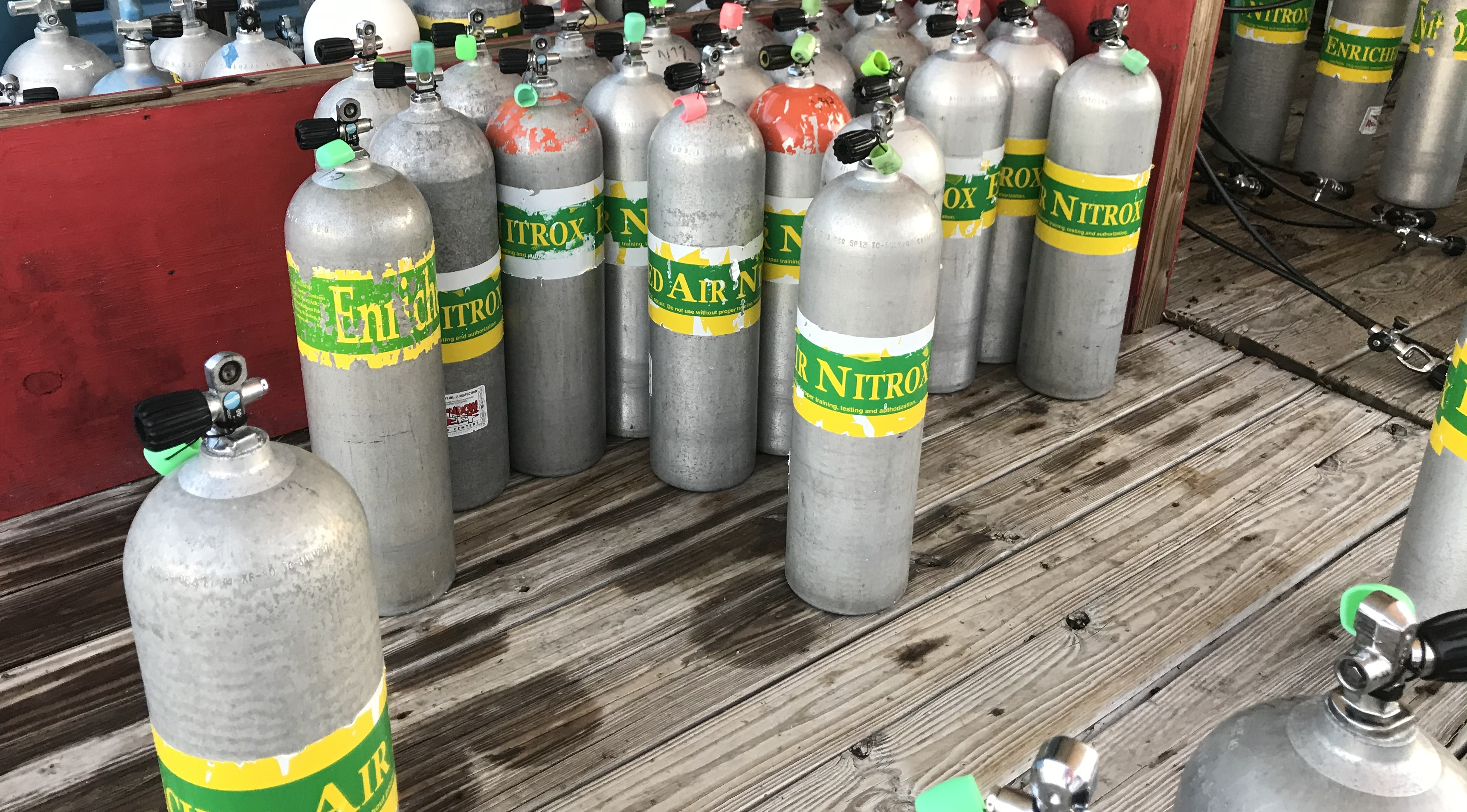No products in the cart.
Nitrox Certified? Breathe Easy on Longer Dives!

Okay, newbie divers, listen up! You’re hooked on the underwater world, fins kicking, bubbles trailing, right? But guess what? There is another level that will let you stay down longer and explore the world beneath the waves. It’s called getting Enriched Air or Nitrox certified. But before you rush and book the course, let’s explore if it’s the right fit for you, shall we?
What’s This Nitrox Thing, Anyway?
Normal air tanks are filled with, well, normal air. That’s about 78% nitrogen, 21% oxygen, and 1% other gasses. That’s right, if you weren’t paying attention in high school science, what we call air is only about 21% oxygen. The bulk of what you breathe is nitrogen and for breathing, it’s mostly useless to our bodies. (It is an inert gas) However, nitrogen hangs out in your blood after a dive, like those annoying party guests who overstay their welcome. Too much nitrogen, and you get “the bends” – not cool. Nitrox is different. It’s air pumped up with more oxygen (up to 40%) and less nitrogen, meaning less hang-around time for those party-pooper gas bubbles.
So, Why Get Nitrox Certified?
Picture this: you’re gliding past coral canyons, sunlight dappling like underwater disco lights. But your dive timer screams “surface time!” No fair, right? That’s where Nitrox shines. When you are breathing in less nitrogen, you can stretch your bottom time (that’s dive-speak for “hang out underwater longer”). Plus, shorter surface intervals (time spent lying to other divers about everything you saw on your last dive) mean more time for underwater fun and less waiting around like a landlocked fish.
Should Every Diver Get Nitrox Certified? Not Quite.
Hold your horses, newbs! Nitrox isn’t for everyone. If you’re starting out, mastering basic skills and buoyancy is key. Think of Nitrox as the spice to your diving curry – delicious, but too much can burn your tongue. But once you’re comfortable underwater and have logged some dives, then a Nitrox certification can be the secret ingredient that takes your diving to the next level. Additionally, if your primary dive profile is shallow, a Nitrox certification won’t help you much. Here in Palm Beach County, FL, we have the beautiful Blue Heron Bridge. While the bridge is an awesome dive site, the maximum depth is only 21 ft. Diving with Nitrox vs. standard air won’t make any difference at all. It doesn’t stop most Nitrox certified divers from diving with Nitrox at the bridge. At that depth, diving Nitrox doesn’t help, but it doesn’t hurt either.
Is It Worth the Hype?
That depends, my friend. Nitrox training isn’t free, and you’ll need to make sure you request it when you order your tanks for each dive. But hey, think of it as an investment in your diving future. Longer dives, less decompression blues – that’s a pretty sweet package deal. Plus, mastering Nitrox shows you’re serious about diving, opens doors to new dive buddies, and boosts your confidence like a magic buoyancy belt.
Wrap Up
Nitrox isn’t a “must-have” for every diver, but it’s worth considering as you level up your underwater game. If you’re a dive-crazed explorer hungry for longer adventures, then Nitrox might just be the magic potion you need. But remember, safety first! Talk to your dive instructor, make sure you’re ready, and then prepare to unleash your inner Nitrox ninja!